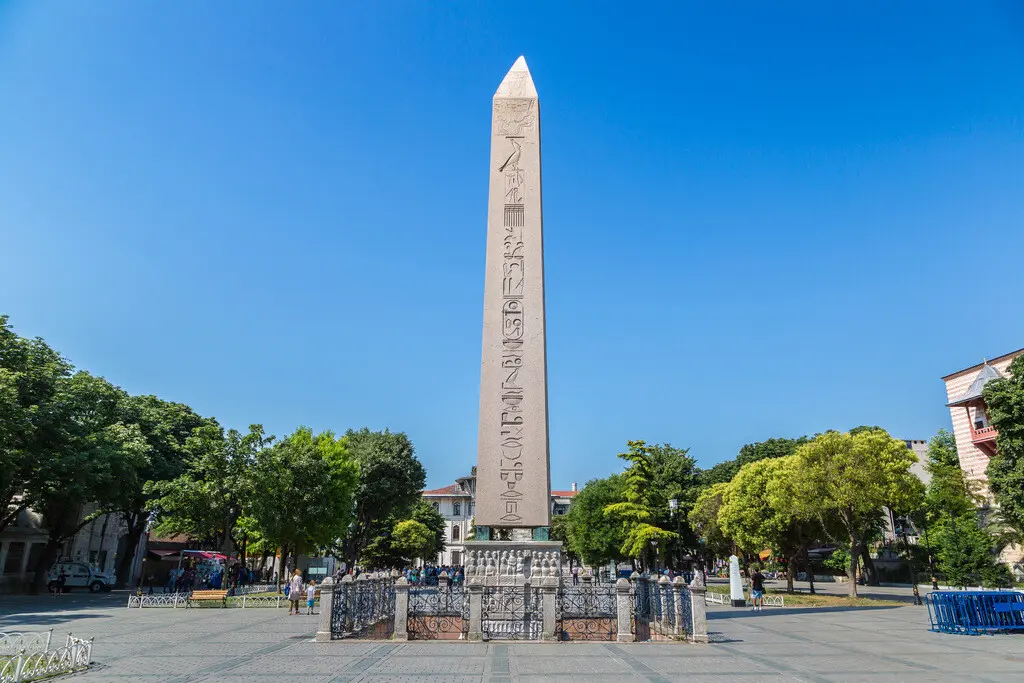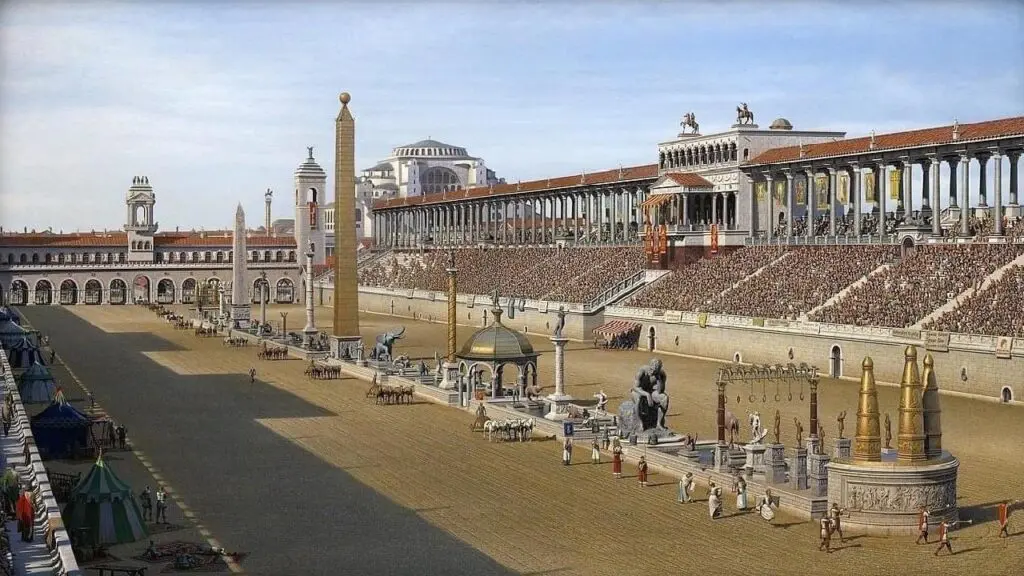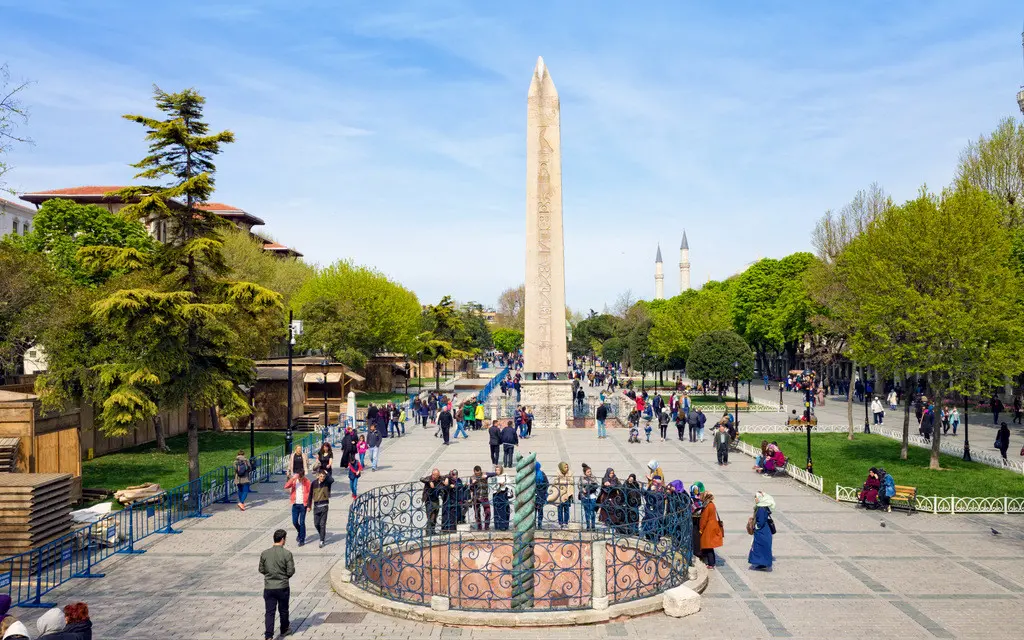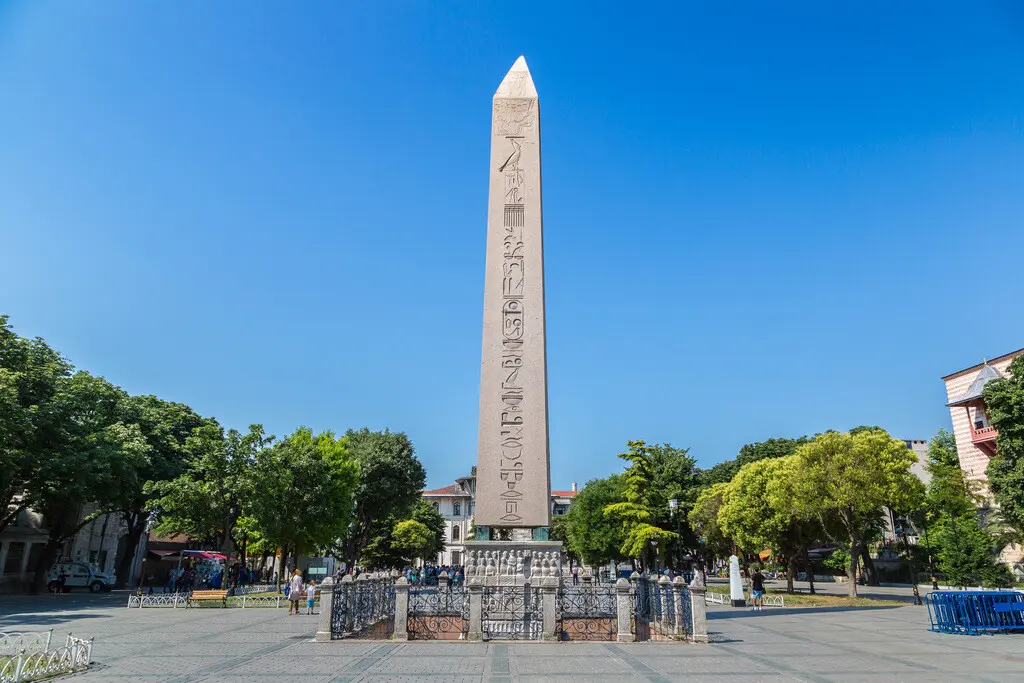
Istanbul is a city steeped in history, where the past and present blend seamlessly. One of the most fascinating historical sites in this vibrant city is the Hippodrome of Istanbul. But what exactly is the Hippodrome, and why is it so important? Let’s dive into the rich history and explore the top attractions of this legendary site.
Table of Contents
What is the Hippodrome?
The Hippodrome Istanbul, also known as the Hippodrome of Constantinople, is a large open-air arena that was once the social and sporting heart of the Byzantine Empire. This grand stadium was used for chariot races, public events, and political gatherings. The name “Hippodrome” is derived from the Greek words “hippos,” meaning horse, and “dromos,” meaning path or way. It was essentially a racecourse for horses and chariots.
Historical Significance of the Hippodrome
The Hippodrome’s history is not just about its structure; it encapsulates the essence of Byzantine cultural and political life. It was the epicenter of entertainment and a reflection of the empire’s grandeur. The races held here were more than mere sport; they were a display of political alliances and social hierarchies. As such, the Hippodrome was a stage where the complexities of Byzantine life unfolded.
Architectural Marvels of the Hippodrome
The architectural design of the Hippodrome was an engineering marvel of its time. Its elongated U-shape design allowed for maximum spectator capacity, and its grandstand, adorned with statues and monuments, was a visual feast. These architectural choices not only facilitated the events but also symbolized the might and sophistication of the Byzantine Empire. The Hippodrome was a testament to the empire’s architectural prowess and its ability to influence future designs.

Socio-Political Hub of Byzantium
The Hippodrome was more than a place for games; it was a socio-political hub where the voices of the people could be heard. The demes played a crucial role here, as they were not just fans but political entities. The Hippodrome thus became a venue for expressing political dissent and supporting various factions. This made it a critical site for understanding the political climate of Byzantium and the interplay between the rulers and the ruled.
Why Are the Demes and Hippodrome Important?
The Hippodrome was more than just a sports arena; it was a center of Byzantine life. The demes, or factions, were essentially political and social organizations that supported different chariot teams. They held significant power and influence in the city. The two main factions were the Blues and the Greens, and their rivalries often reflected broader social and political tensions within the empire. The Hippodrome was a place where these tensions played out, making it a key site for understanding Byzantine society and politics.
The Role of the Demes
The demes were not mere fan clubs; they were powerful entities with a voice in the empire’s political landscape. They had the ability to influence decisions and were often involved in the administration of the city. This influence extended beyond the Hippodrome, affecting the broader political and social order of Constantinople. Their role in the Hippodrome was a microcosm of their larger impact on Byzantine society.
The Blues and Greens: Beyond Sport
The rivalry between the Blues and Greens transcended the realm of sports, reflecting deep societal divisions. These factions were aligned with different political, religious, and social causes, turning the Hippodrome into a battleground for ideological conflicts. The clashes between these factions could sometimes lead to citywide disturbances, highlighting the Hippodrome’s role in shaping Byzantine history. This rivalry was emblematic of the complex social fabric of the time.
Political Intrigue and the Hippodrome
The Hippodrome was a venue for political intrigue where emperors and citizens interacted in a public space. Emperors used the arena to curry favor with the populace, often aligning themselves with one of the demes. This relationship was fraught with tension, as the demes could quickly turn against an emperor who lost their favor. The Hippodrome thus served as a dynamic arena for political maneuvering and public discourse, influencing the course of the empire.
A Walk Through History: The Hippodrome Istanbul
The Hippodrome’s history dates back to the early 3rd century when it was constructed by the Roman Emperor Septimius Severus. It was later expanded by Constantine the Great in the 4th century, becoming one of the most magnificent structures in Constantinople, the capital of the Byzantine Empire. The Hippodrome could accommodate tens of thousands of spectators, making it a crucial venue for public life.

Construction and Expansion
The initial construction of the Hippodrome under Septimius Severus laid the foundation for its future grandeur. Constantine the Great’s expansion transformed it into a monumental structure, reflecting the emperor’s vision for Constantinople as the new Rome. This expansion not only increased its capacity but also enhanced its architectural beauty, making it a symbol of Byzantine power and ambition.
The Hippodrome in Byzantine Society
The Hippodrome was integral to Byzantine society, serving as a venue for imperial ceremonies, public announcements, and celebrations. It was a place where the emperor could connect with the people, demonstrating the empire’s wealth and power. This connection was vital for maintaining the emperor’s image and authority, making the Hippodrome a key instrument in the political and social life of Byzantium.
Decline and Transformation
With the fall of Constantinople, the Hippodrome underwent a transformation, reflecting the changing political landscape. Although much of its structure was lost, its legacy continued to influence the city’s architecture and cultural memory. The remnants of the Hippodrome serve as a reminder of its past glory and the enduring legacy of the Byzantine Empire.
Key Attractions at the Hippodrome Istanbul
Today, visitors to the Hippodrome can explore several significant monuments that hint at its glorious past. Here are some of the top attractions:
The Obelisk of Theodosius
One of the most striking features of the Hippodrome is the Obelisk of Theodosius. Originally erected in Egypt by Pharaoh Thutmose III, this ancient monument was transported to Constantinople by Emperor Theodosius I in 390 AD. The obelisk stands on a marble pedestal adorned with intricate reliefs depicting the emperor’s life and achievements.
Historical Journey of the Obelisk
The journey of the Obelisk from Egypt to Constantinople is a testament to the interconnectedness of ancient civilizations. Its transportation and re-erection in the Hippodrome signified the transfer of power and cultural heritage from one great empire to another. The obelisk’s presence in Constantinople symbolized the Byzantine Empire’s connection to the ancient world and its own imperial aspirations.
Artistic and Cultural Significance
The Obelisk’s intricate reliefs are a masterpiece of ancient art, offering insights into the cultural and artistic achievements of the Byzantine Empire. These carvings depict scenes of imperial ceremonies and victories, serving as a visual narrative of the empire’s history. The artistry of the obelisk reflects the empire’s commitment to cultural patronage and its desire to immortalize its achievements.
Restoration and Preservation
Efforts to preserve the Obelisk of Theodosius underscore the importance of maintaining historical artifacts for future generations. Conservation projects have ensured that this ancient monument remains a focal point for visitors, allowing them to appreciate its historical significance. These efforts highlight the ongoing commitment to preserving the cultural heritage of the Byzantine Empire.
The Serpent Column
The Serpent Column, another remarkable monument, is a twisted bronze pillar that once stood in the Temple of Apollo at Delphi. It was brought to the Hippodrome by Constantine the Great in the 4th century. Originally, the column was topped with three serpent heads, but these have since been lost to history.
Origins and Mythology
The Serpent Column’s origins in Delphi connect it to the rich tapestry of Greek mythology and history. It was originally erected to commemorate the Greek victory over the Persians at the Battle of Plataea. This connection to Greek history imbued the column with symbolic significance, representing the triumph of civilization over barbarism.
Symbolism in Byzantium
In the Byzantine context, the Serpent Column symbolized wisdom and protection. Its presence in the Hippodrome served as a reminder of the empire’s roots in Greek tradition and its role as a guardian of ancient knowledge. The column’s enduring presence in the Hippodrome illustrates the Byzantine Empire’s respect for its cultural heritage and its role as a bridge between past and present.

Preservation Challenges
The loss of the serpent heads highlights the challenges of preserving ancient artifacts. Despite these losses, the column remains a vital link to the past, capturing the imagination of visitors. Preservation efforts continue to focus on maintaining its structural integrity, ensuring that it remains a testament to the enduring legacy of the Byzantine Empire.
The German Fountain
A more recent addition to the Hippodrome is the German Fountain, a beautiful gazebo-style structure gifted to the Ottoman Empire by German Emperor Wilhelm II in 1898. This ornate fountain, with its neo-Byzantine design, is a testament to the enduring connections between different cultures and empires throughout history.
Diplomatic Gift and Symbolism
The German Fountain was not just a functional structure but a diplomatic gesture that symbolized the friendship between Germany and the Ottoman Empire. Its design, incorporating elements of Byzantine architecture, was a nod to the shared history and cultural ties between the two empires. The fountain stands as a reminder of the complex interplay of diplomacy and culture in the late 19th century.
Architectural Features
The fountain’s neo-Byzantine design features intricate mosaics and elegant arches, reflecting the artistic influences of the time. Its octagonal shape and domed roof are characteristic of Byzantine architecture, while its decorative elements showcase the craftsmanship of the period. These features make the German Fountain a unique addition to the Hippodrome’s landscape, blending historical styles with modern influences.
Cultural Legacy
The German Fountain’s presence in the Hippodrome is a testament to the enduring legacy of cultural exchange and collaboration. It serves as a symbol of the interconnectedness of empires and the shared heritage that transcends political boundaries. The fountain’s continued popularity among visitors highlights its significance as a cultural landmark in Istanbul.
The Hippodrome’s Legacy
Though the grandstands and much of the original structure are no longer visible, the Hippodrome’s legacy lives on. It remains a crucial site for understanding the social, political, and cultural life of the Byzantine Empire. Its influence can be seen in the design of other famous stadiums, like the Circus Maximus in Rome.
Influence on Future Architecture
The architectural innovations of the Hippodrome set a precedent for future stadium designs. Its U-shape and grandstand arrangements influenced the construction of arenas across the ancient world, including the Circus Maximus in Rome. This legacy of design demonstrates the Hippodrome’s lasting impact on the architectural landscape and its role in shaping the development of public spaces.
The Hippodrome in Modern Culture
The Hippodrome’s legacy extends beyond architecture to its influence on modern culture and historical memory. It serves as a source of inspiration for artists, writers, and historians, who continue to explore its significance in Byzantine and world history. This cultural resonance ensures that the Hippodrome remains a vibrant part of Istanbul’s identity, connecting past and present.
Preservation and Education
Preserving the Hippodrome’s legacy involves ongoing efforts to educate the public about its historical and cultural significance. Initiatives such as guided tours, exhibitions, and educational programs aim to engage visitors and deepen their understanding of this ancient site. These efforts are essential for ensuring that the Hippodrome’s legacy is appreciated by future generations.
Visiting the Hippodrome Istanbul Today
Today, the Hippodrome is a public square known as Sultanahmet Meydanı, located in the heart of Istanbul’s historic district. Visitors can stroll through the square and admire the surviving monuments, each a testament to the city’s rich and varied history.
Navigating Sultanahmet Meydanı
Exploring Sultanahmet Meydanı offers visitors a unique opportunity to immerse themselves in Istanbul’s historical ambiance. The square’s layout, with its open spaces and accessible monuments, allows for a leisurely exploration of the site’s rich history. Visitors can enjoy the blend of ancient and modern elements, experiencing the vibrancy of this historic district.

Engaging with History
Visiting the Hippodrome offers more than just a visual experience; it is an opportunity to engage with history on a personal level. Guided tours and informational plaques provide insights into the site’s significance, helping visitors appreciate its historical context. This engagement enriches the visitor experience, allowing for a deeper connection to the past.
Experiencing the Surrounding Area
The Hippodrome’s location in the heart of Istanbul’s historic district makes it an ideal starting point for exploring nearby attractions. Visitors can easily access iconic landmarks such as the Blue Mosque and Hagia Sophia, enriching their understanding of the city’s cultural and historical landscape. This proximity allows for a comprehensive exploration of Istanbul’s rich heritage.
Tips for Exploring the Hippodrome
- Timing: The Hippodrome is open to the public year-round, but visiting in the early morning or late afternoon can provide a more peaceful experience.
- Guided Tours: Consider joining a guided tour to gain deeper insights into the history and significance of the site.
- Nearby Attractions: The Hippodrome is close to other iconic Istanbul landmarks, such as the Blue Mosque and Hagia Sophia, making it easy to explore multiple sites in one visit.
Optimal Visiting Times
Choosing the right time to visit the Hippodrome can enhance the overall experience. Early mornings and late afternoons offer a quieter atmosphere, allowing visitors to appreciate the site’s beauty without the bustle of crowds. These times also provide ideal lighting conditions for photography, capturing the site’s architectural splendor.
Benefits of Guided Tours
Joining a guided tour can significantly enrich the visitor experience at the Hippodrome. Knowledgeable guides provide in-depth information about the site’s history, architecture, and cultural significance, offering insights that may not be apparent from a casual visit. These tours can transform a simple visit into an educational journey through Byzantine history.
Exploring Nearby Landmarks
The Hippodrome’s central location makes it a convenient hub for exploring Istanbul’s other historical landmarks. Visitors can easily plan a day of sightseeing, starting with the Hippodrome and continuing to nearby attractions such as the Blue Mosque and Hagia Sophia. This itinerary offers a comprehensive exploration of Istanbul’s rich cultural heritage.
Conclusion
The Hippodrome of Istanbul is a remarkable testament to the city’s rich history and its role as a center of power and culture. From its origins as a grand arena for chariot races to its current status as a historic square, the Hippodrome continues to captivate visitors with its fascinating past and enduring legacy. Whether you’re a history enthusiast or a curious traveler, exploring the Hippodrome and its top attractions is an essential part of any trip to Istanbul.
Embracing Istanbul’s History
By understanding the importance of the Hippodrome and its role in Byzantine life, visitors can gain a deeper appreciation for Istanbul’s unique position at the crossroads of history and culture. The site offers a window into the past, allowing visitors to connect with the city’s rich historical narrative and its influence on modern civilization.
The Enduring Appeal of the Hippodrome
The enduring appeal of the Hippodrome lies in its ability to transcend time, offering insights into the complexities of ancient society while remaining relevant to contemporary audiences. Its monuments and history continue to inspire awe and curiosity, ensuring that the Hippodrome remains a vital part of Istanbul’s cultural landscape.
Planning Your Visit
So next time you’re in Istanbul, make sure to add the Hippodrome to your itinerary and immerse yourself in the captivating story of this ancient site. With careful planning and a sense of curiosity, visitors can experience the magic of the Hippodrome and its contributions to Istanbul’s rich historical tapestry.
FAQs
1. Where is the Hippodrome located?
The Hippodrome is located in Sultanahmet, Istanbul, near major landmarks like the Blue Mosque and Hagia Sophia.
2. What was the Hippodrome used for?
It was an ancient Byzantine chariot-racing arena, used for various public events and competitions.
3. Is there an entrance fee to visit the Hippodrome?
No, the Hippodrome is an open-air public area and is free to visit.
4. What are the main attractions at the Hippodrome?
The Hippodrome features historical monuments such as the Obelisk of Theodosius, the Serpent Column, and the German Fountain.
5. Can I walk around the Hippodrome?
Yes, the Hippodrome is an open public space where you can stroll and enjoy the historical sights.
6. What is the history of the Hippodrome?
Built by Emperor Septimius Severus in the 3rd century AD, it became a center for chariot races and public gatherings during the Byzantine Empire.
7. Is the Hippodrome still used for events today?
No, the Hippodrome is no longer used for chariot races, but it remains an important historical and tourist site.
8. Are there guided tours available?
Yes, you can take guided tours around the Hippodrome to learn about its history and significance.
9. Is the Hippodrome accessible for people with disabilities?
Yes, the area is generally accessible for people with disabilities, though some parts may have uneven surfaces.
10. What is the best time to visit the Hippodrome?
The best time to visit is early in the morning or late afternoon to avoid large crowds and enjoy cooler weather.

